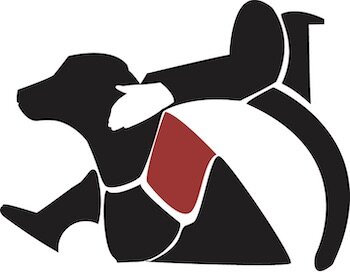Summer Safety Tips
Heat Stroke in Dogs
Signs of heatstroke include:
Excessive panting
Increased heart rate
Confusion or disorientation
Vomiting or diarrhea
Bright red gums
Body temperature higher than 104F
Collapse, seizure, or coma
What to do:
Move the dog to a shady, well-ventilated area
💧 Pour cool (not cold or ice) water over the body — avoid the face
🚫 Do not use towels — they trap heat and worsen the condition
🌬️ If possible, place a fan nearby to help evaporate water and release heat
🥤 If the dog is alert, offer small sips of cool water; Do not force water or use a syringe
🚑 Transport to a vet immediately
If collapsed, vomiting, seizing, or disoriented, do not delay care
If you are unable to get to the vet right way, monitor his/her temperature and check for signs of shock. Stop the cooling process when your dog’s temperature reaches 104F. Do not continue cooling him/her or the body temperature could drop too low, increasing the risk of shock.
Seek veterinary care as soon as possible. Many medical problems caused by heatstroke won’t show up right away.
Keeping your dog cool
Dogs don’t sweat like we do. Instead, they cool themselves by panting. When a dog becomes overheated its body may no longer be able to cool itself off. As your dog’s internal temperature rises, it can lead to dehydration, heat cramps, heat stress or heatstroke. Keep in mind, your dog’s normal temperature should be between 100.2 F and 102.8 F; if his/her temperature rises past 104F, he/she is in serious trouble. The good news is heatstroke can easily be prevented and it is reversible if caught early. See below for tips to keep your dog cool on hot days. If you suspect your dog is overheated, seek veterinary treatment immediately.
Air temperature isn’t the only thing you should consider. Humidity, sun exposure, amount of time in the heat, level of exertion, and availability of water can all affect how well a dog tolerates heat. Your dog is a willing participant in your life and aims to please you. He/she may continue to play, walk, or hike no matter how hot the day or how overheated he/she becomes.
Tips for Keeping Your Dog Cool
Never leave your dog in the car on a warm day; the temperature will rise quickly even in the shade and with the windows cracked.
Schedule your dog’s exercise for early morning or dusk. Carry water and offer it to your dog frequently.
Keep your dog in the shade as much as possible.
Test the pavement before walking your dog. Put the back of your hand on the ground for 7 seconds; if it is uncomfortable for your hand then it is uncomfortable for the dog to stand on. If you must have you dog on hot pavement, have him/her lay down instead of standing so their fur is on the ground instead of their paw pads, but do not remain long.
Carry a bathmat if you know you will be outside on hot surfaces.
Have you keys ready to unlock your vehicle as quickly as possible so your dog can jump right in.
Provide rest breaks in the shade and plenty of water on all outdoor excursions.
Take a dip in cool water. Wet your dog with the hose or provide water play like a sprinkler or wading pool.
Consider purchasing a cool mat or other dog-friendly cooling aids.
Purchase sunscreen for dogs’ nose or exposed skin.
If traveling to a new climate, give your dog several days to acclimate before strenuous outdoor activities.
Keep a thermometer with you so you can check your dog’s temperature
Example of blue-green algae
KEEP YOUR DOG SAFE: BLUE-GREEN ALGAE WARNING!
What is Green Algae?It is a toxic bacteria found in ponds, lakes, and slow-moving rivers, especially during warm months. It can look like pea soup, green paint, or a thick scum on the water’s surface.
Why is it dangerous to dogs?
Just a few laps of contaminated water can be deadly
Dogs can be exposed by swimming, drinking, or licking algae off fur
Toxins affect the liver or nervous system, sometimes causing death within hours
Symptoms of Toxicity
Include: Vomiting or diarrhea; drooling or foaming at mouth; lethargy or weakness; muscle tremors or seizures; breathing difficulties; disorientation or collapse
Prevent Exposure
Keep dogs away from lakes, ponds, or rivers with visible algae (green scum, pea soup appearance, or foul odor).
Do not allow dogs to drink from, wade in, or swim in suspect water.
Heed warning signs at public parks or beaches about harmful algae blooms (HABs).
What to Do if your dog is exposed
Rinse your dog thoroughly with clean water immediately—do not let them lick themselves.
Seek veterinary care immediately—this is a medical emergency.




